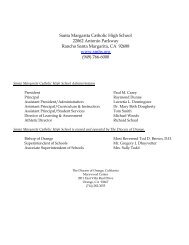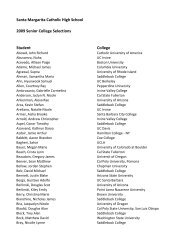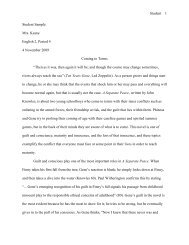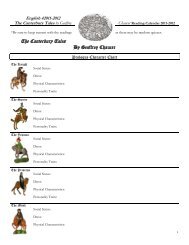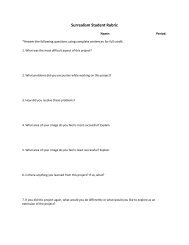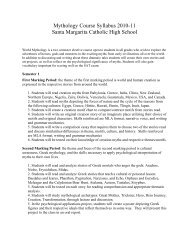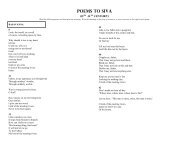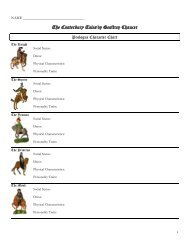Picasso Art Article
Picasso Art Article
Picasso Art Article
Create successful ePaper yourself
Turn your PDF publications into a flip-book with our unique Google optimized e-Paper software.
CUBISM COMES<br />
FULL CIRCLE<br />
"You can try anything in painting.<br />
You even have a right to, provided you never do it again." —Pablo <strong>Picasso</strong><br />
<strong>Picasso</strong> became fascinated with dance and theater<br />
in 1917, when he was invited to design sets and<br />
costumes for the Ballet Russes (ba-LEY roos)—the<br />
most important dance company of the day. <strong>Picasso</strong> hated<br />
being tied down to any one style. Working in another<br />
medium gave him a chance to experiment with new<br />
techniques. Collage had also opened up a world of new<br />
possibilities. The flatness of the cut-out shapes inspired<br />
<strong>Picasso</strong> to simplify his compostions. The bright colors and<br />
patterns of different kinds of paper inspired him to rein-<br />
troduce color and pattern into his paintings.<br />
Pierrot and Harlequin (pye-RO and HAR-luh-quin)<br />
(pages 8—9), which <strong>Picasso</strong> painted in 1920, and Three<br />
Musicians (left), painted in 1921, show the influence of<br />
working with both the Ballet Russes and collage. In both<br />
paintings, Pierrot and Harlequin, traditional theater characters,<br />
are seen from a frontal point of view and placed<br />
in spaces that resemble a shallow stage set. Like <strong>Picasso</strong>'s<br />
collages, these paintings have no modeling, perspective,<br />
or depth. They are simpler and more colorful than Pica-<br />
A "You work with few colors. But they seem<br />
like a lot more when each one is in the right<br />
place." -Pablo <strong>Picasso</strong><br />
Three Musicians, Fontainebleau, summer 1921. Oil on canvas, 6' 7" x 7' 3 3/4". Mrs, Simon<br />
Guggenheim Fund. (55.1949) The Museum ol Modern <strong>Art</strong>, New York, NY, U.S.A. Photo<br />
Credit: Digital Image ©The Museum of Modern <strong>Art</strong>/Licensed by SCALA / <strong>Art</strong> Resource, NY.<br />
© 2009 Estate of Pablo <strong>Picasso</strong> / <strong>Art</strong>ists Rights Society (ARS), New York.<br />
K "Different motives inevitably require different<br />
methods of expression." -Pablo <strong>Picasso</strong><br />
Weeping Woman [Femme en pleursj, 1937. Oil on canvas. 60.8 x 50.0 cm., Tate Gallery,<br />
London, Great Britain. Photo Credit: Tate, London / <strong>Art</strong> Resource, NY. © 2009 Estate of<br />
Pablo <strong>Picasso</strong> / <strong>Art</strong>ists Rights Society (ARS), New York.<br />
6 SCHOLASTIC ART • 2009



